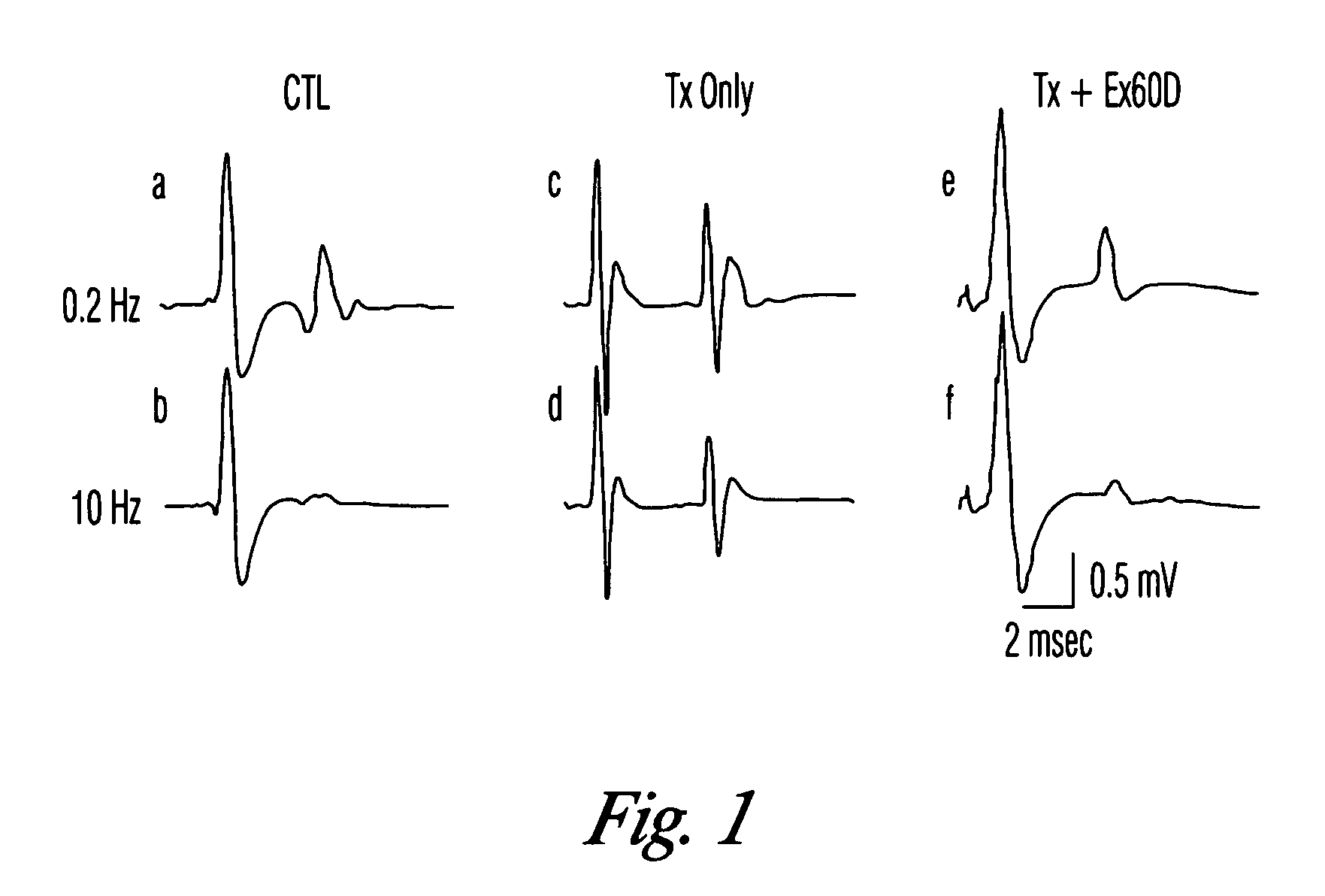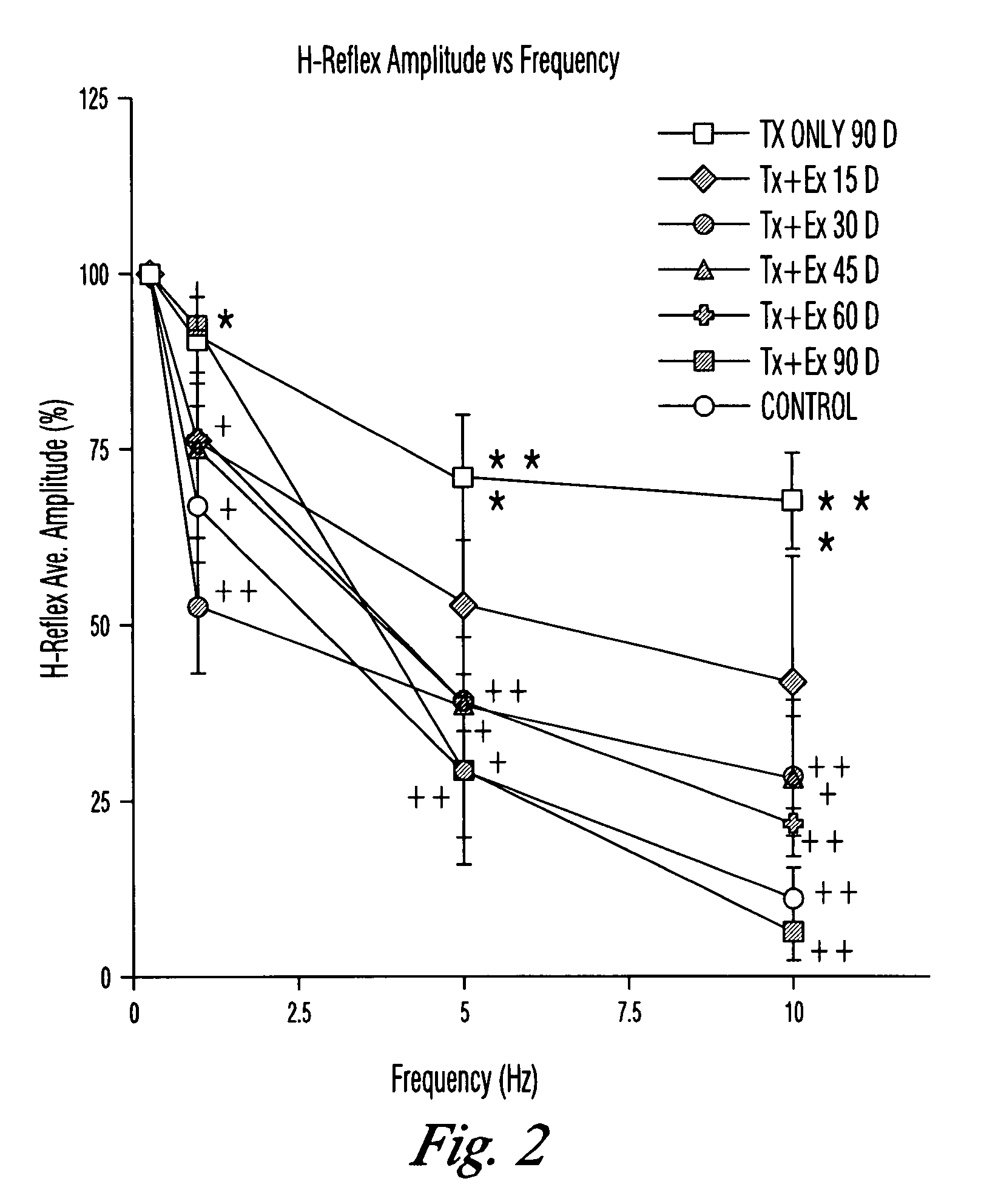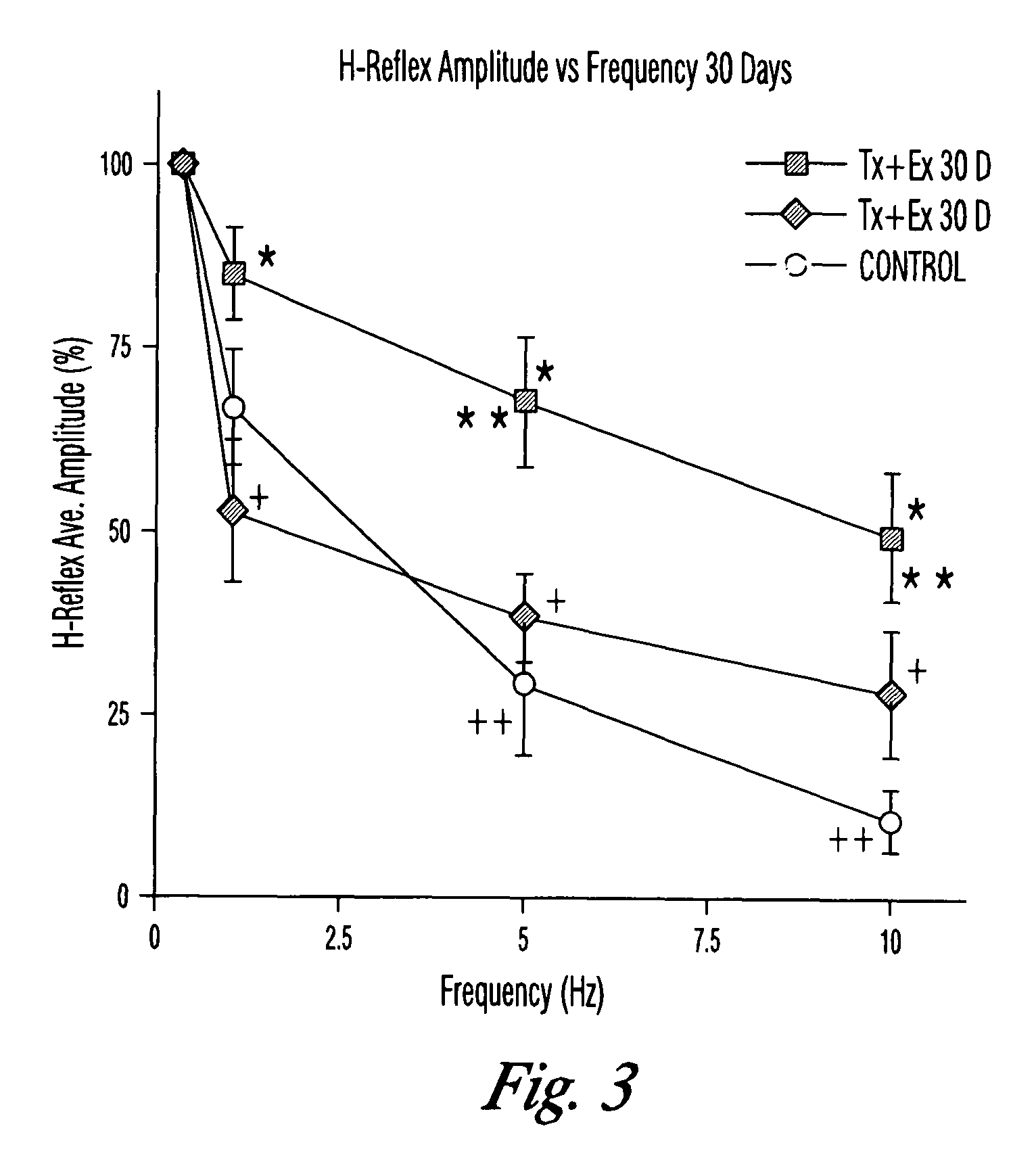Use of modafinil to treat spasticity
a modafinil and spasticity technology, applied in the field of modafinil to treat spasticity, can solve the problems of promoting spasticity and excessive reflex responses, and achieve the effect of reducing hyper-reflexia
- Summary
- Abstract
- Description
- Claims
- Application Information
AI Technical Summary
Benefits of technology
Problems solved by technology
Method used
Image
Examples
example
Section 1
Restoration of Frequency-Dependent Depression of the H-Reflex by Passive Exercise in Spinal Rats
[0042]Spinal cord injury (SCI) results in numerous deficits of the motor and sensory systems, including paralysis, anesthesia, and hyper-reflexia below the level of the lesion. Hyper-reflexia is evident in both humans and non-human animals following SCI and is a major component of spasticity. The physiological changes that have been postulated to contribute to hyper-reflexia include alpha motoneuron hyperexcitability (1, 2, 3), changes in the intrinsic properties of alpha motoneurons (4, 5, 6, 7), reduced post-activation depression of transmission from Ia fibers (8, 9), synapse growth (10), alterations in morphology of alpha motoneurons (11), and decreased presynaptic inhibition of Ia terminals (9, 12, 13, 14, 15). The time course of spinal changes after injury has been proposed to include an early postsynaptic mechanism, possibly involving an increase in excitability and / or rece...
PUM
| Property | Measurement | Unit |
|---|---|---|
| frequency | aaaaa | aaaaa |
| frequency | aaaaa | aaaaa |
| frequency | aaaaa | aaaaa |
Abstract
Description
Claims
Application Information
 Login to View More
Login to View More - R&D
- Intellectual Property
- Life Sciences
- Materials
- Tech Scout
- Unparalleled Data Quality
- Higher Quality Content
- 60% Fewer Hallucinations
Browse by: Latest US Patents, China's latest patents, Technical Efficacy Thesaurus, Application Domain, Technology Topic, Popular Technical Reports.
© 2025 PatSnap. All rights reserved.Legal|Privacy policy|Modern Slavery Act Transparency Statement|Sitemap|About US| Contact US: help@patsnap.com



